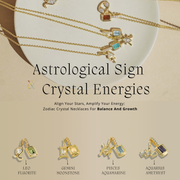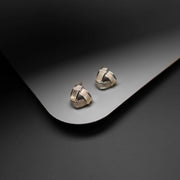What Is Ruby? The Science of a Scarlet Treasure
Ruby, a variety of the mineral corundum (Al₂O₃), derives its iconic blood-red hue from trace amounts of chromium. With a Mohs hardness of 9, it’s the second-hardest natural gem after diamond, making it exceptionally durable for daily-wear jewelry. Unlike its blue cousin sapphire, ruby’s value hinges on its color saturation and purity—not clarity. Inclusions like silk-like rutile needles ("silk") are often present and even authenticate natural origin13.
Key Characteristics:
-
Color Range: Pinkish-red to deep "pigeon’s blood" red (the most prized).
-
Fluorescence: High-chromium rubies glow under UV light, intensifying their red hue.
-
Sources: Myanmar (Burma), Mozambique, Thailand, Vietnam.
The Legend & Lore of Ruby
For millennia, rubies have symbolized power, protection, and passion:
-
Ancient Warriors: Burmese soldiers embedded rubies in their skin for invincibility in battle3.
-
Royal Treasures: The 170-carat "Black Prince’s Ruby" in the British Imperial Crown was mistaken for centuries as a ruby (later identified as spinel)10.
-
Cultural Icons: In Indian Vedic texts, rubies were called "ratnaraj" (King of Gems), believed to protect against evil and ensure prosperity1.
"Rubies don’t just adorn crowns—they command them."

Pigeon’s Blood: The Ultimate Ruby Color
The term "pigeon’s blood" describes rubies with:
✅ Pure red hue: No brown or purple undertones.
✅ Medium-dark tone: Like fresh arterial blood.
✅ Strong fluorescence: Creates an inner "fire."
Value Impact:
| Color Grade | Price Range (Per Carat) |
|---|---|
| Pigeon’s Blood | $10,000 – $1M+ |
| Vivid Red | $5,000 – $50,000 |
| Light Pink-Red | $500 – $3,000 |
*Note: 90% of rubies are heat-treated to enhance color—untreated stones fetch 2–5x premiums*310.

Ruby vs. Spinel: The Great Deception
Historically confused due to similar colors, spinel is ruby’s most convincing lookalike—yet critically different:
-
Chemistry: Spinel (MgAl₂O₄) forms in cubic crystals; ruby forms in hexagonal prisms.
-
Rarity: Rubies are 30x rarer than spinel in gem-quality sizes >3 carats10.
-
Value: Fine rubies command 10–20x higher prices than spinel (see table)10:
| Gemstone | 3-Carat Premium Quality | Key Differentiator |
|---|---|---|
| Ruby | $300,000 – $1M+ | Chromium fluorescence |
| Spinel | $10,000 – $30,000 | No fluorescence; single refraction |
Modern Ruby Jewelry: Trends & Craftsmanship
The ruby market is surging, driven by:
-
Luxury Demand: Global ruby jewelry sales hit $1.66B in 2024, projected to grow 9.5% annually6.
-
Ethical Sourcing: Brands like Tiffany & Co. now use blockchain to trace rubies from mine to market, responding to demand for conflict-free gems6.
-
Design Innovations:
-
East-West Fusion: Vietnamese designers pair ruby clusters with lacquer art.
-
Minimalist Settings: Unheated Mozambican rubies in platinum bezels attract younger buyers8.
-
Caring for Your Ruby Jewelry
Preserve ruby’s brilliance with these steps:
-
Cleaning: Use warm water + mild soap; avoid ultrasonics for fracture-filled stones3.
-
Storage: Separate from diamonds to prevent scratches.
-
Re-Treatment: Heat-treated rubies may require re-oiling every 5 years to mask fractures.
Warning: Glass-filled rubies degrade with heat exposure—never steam-clean!

Why Ruby Reigns Supreme
Beyond its beauty, ruby embodies a trifecta of value:
-
Symbolic Power: Linked to love (July birthstone) and 15th/40th wedding anniversaries3.
-
Investment Potential: Auction records like the $30M "Sunrise Ruby" prove its appreciation capacity6.
-
Scientific Rarity: Chromium-rich corundum forms only in marble-hosted deposits (e.g., Myanmar’s Mogok Valley)—a geological lottery1.
"In a world of gems, ruby is the sovereign—combining fire, history, and an unyielding grip on human desire."
Explore our Ruby Collection for ethically sourced, GIA-certified masterpieces.







